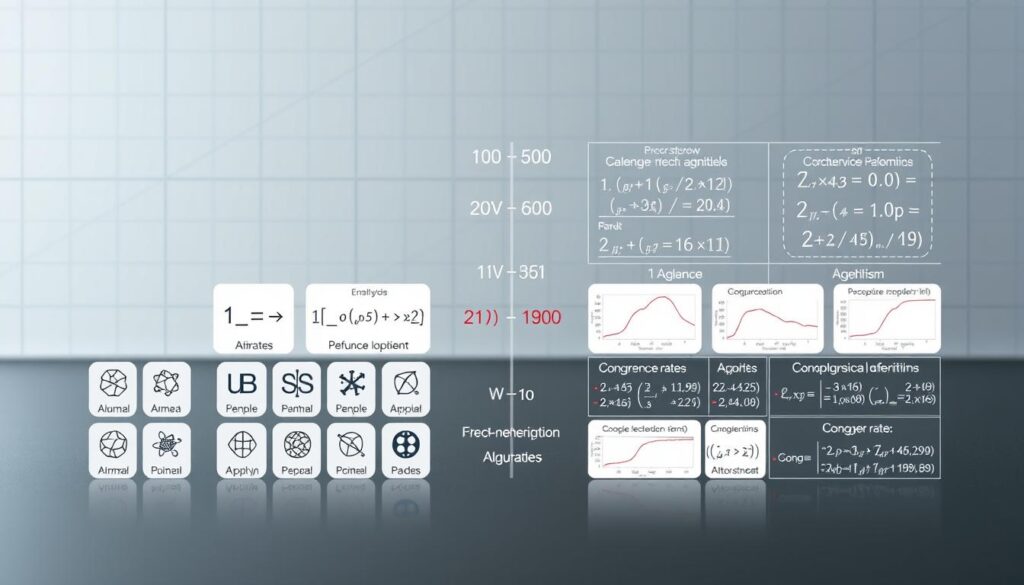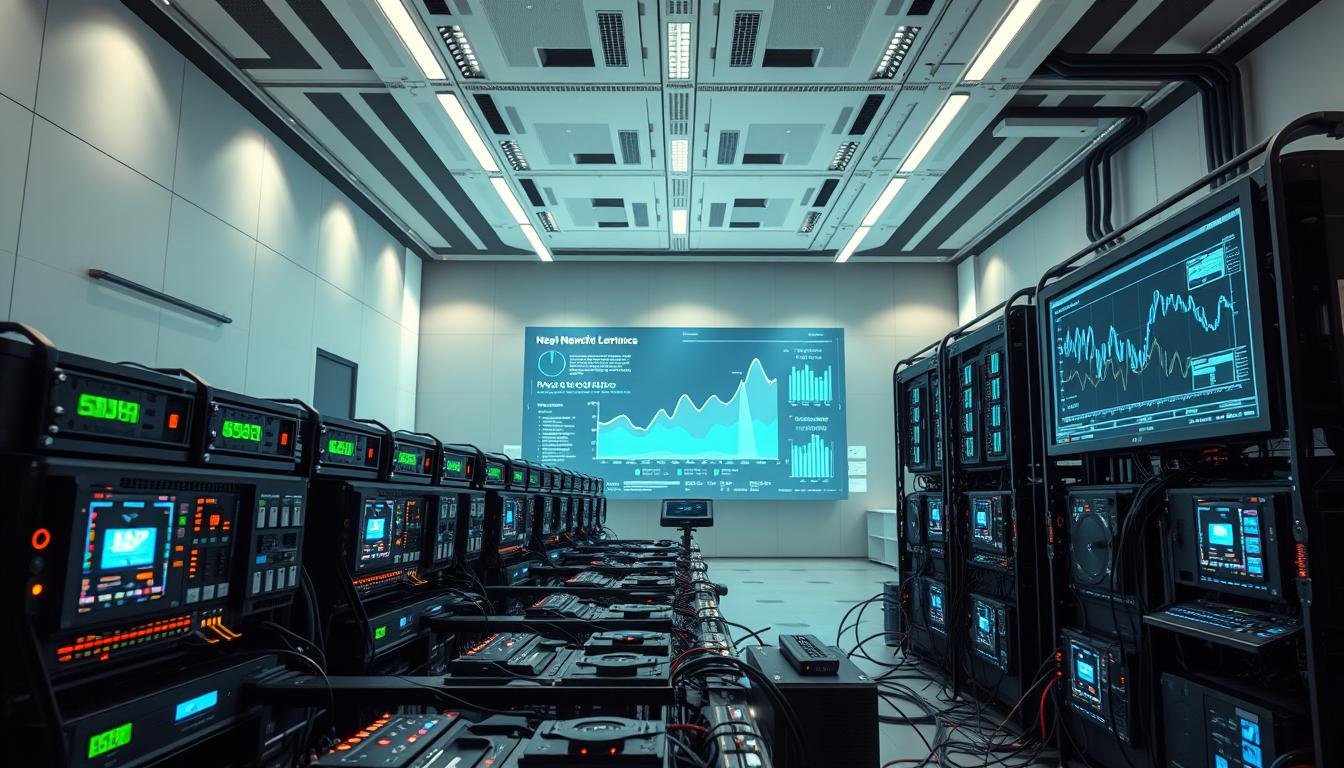Have you ever wondered how models improve their accuracy over time? The secret lies in optimization, a process that fine-tunes parameters to minimize errors. It’s the backbone of training, ensuring models perform at their best.
Optimization techniques like Gradient Descent, SGD, RMSprop, and Adam are widely used. Each has unique strengths, making them suitable for different scenarios. For example, Gradient Descent is simple yet effective, while Adam adapts dynamically to complex tasks.
These methods are not just theoretical. They power real-world applications in industries like finance and healthcare. Choosing the right technique can significantly impact a model’s performance and efficiency.
As we dive deeper, we’ll explore practical examples and emerging trends in optimization. Whether you’re a beginner or an expert, understanding these techniques is crucial for building robust models.
Key Takeaways
- Optimization adjusts parameters to minimize errors in models.
- Key techniques include Gradient Descent, SGD, RMSprop, and Adam.
- Choosing the right method improves model performance.
- Real-world applications span finance, healthcare, and more.
- Emerging trends are shaping the future of optimization.
Introduction to Machine Learning Optimization
Optimization is the key to unlocking a model’s full potential. It’s the process of fine-tuning parameters to minimize errors and improve performance. Without it, models struggle to learn effectively from training data.
At its core, optimization aims to reduce the loss function, which measures how well a model performs. By iteratively adjusting parameters, the model gets closer to its goal of accurate predictions.
One of the most common methods is gradient descent. It uses the learning rate to control how quickly the model updates its parameters. The formula w = w – α*(δloss/δw) shows this process in action.
However, optimization isn’t without challenges. Large datasets can increase computational costs, making the process slower and more resource-intensive. Balancing speed and accuracy is crucial.
Poor optimization can lead to issues like underfitting or overfitting. Understanding the optimization process helps avoid these pitfalls and ensures models perform at their best.
Understanding Gradient Descent
What makes gradient descent a cornerstone of model training? It’s a fundamental technique used to minimize errors by adjusting model parameters. This iterative process ensures predictions become more accurate over time.
At its core, gradient descent works by calculating the slope of the loss function. It then updates the parameters in the opposite direction of the gradient. This helps the model converge toward the optimal solution.
The Basics of Gradient Descent
Gradient descent starts with an initial guess for the parameters. It then iteratively refines these values to reduce the loss. The learning rate controls how big each step is toward the minimum.
Choosing the right learning rate is crucial. If it’s too high, the model might overshoot the minimum. If it’s too low, convergence can be slow. Balancing this is key to efficient training.
Mathematical Representation of Gradient Descent
The formula for gradient descent is simple yet powerful: w = w – α*(δloss/δw). Here, w represents the parameters, α is the learning rate, and δloss/δw is the gradient of the loss function.
This equation shows how parameters are updated iteratively. The process continues until the model reaches a point where the loss is minimized.
Challenges in Gradient Descent
One common issue is getting stuck in local minima. These are points where the loss is low but not the lowest possible. Techniques like momentum can help escape these traps.
Another challenge is handling large datasets. Processing the entire dataset in each iteration can be computationally expensive. Mini-batch gradient descent addresses this by using smaller subsets of data.
Finally, vanishing gradients can slow down learning in deep networks. This occurs when gradients become too small to make meaningful updates. Advanced methods like adaptive learning rates can mitigate this problem.
Stochastic Gradient Descent (SGD)
Stochastic Gradient Descent (SGD) is a game-changer for handling large datasets efficiently. Unlike traditional methods, SGD updates parameters one training example at a time. This approach reduces the computational load, making it ideal for real-world applications.
How It Differs from Gradient Descent
While gradient descent processes the entire dataset in each iteration, SGD works with a single example or a small batch. This randomness introduces noise, which can help escape local minima. However, it also means the path to convergence is less smooth.
Advantages of Stochastic Gradient Descent
SGD is highly efficient for large datasets, as it avoids the need to process all data at once. It’s also memory-friendly, making it suitable for GPU utilization. Additionally, the noise from random sampling can improve generalization in complex tasks.
Implementing SGD in Practice
Implementing SGD is straightforward. In Python, you can use libraries like TensorFlow or Keras to select random samples and update parameters. Adjusting learning rates is crucial to balance speed and accuracy. Techniques like momentum can further reduce variance and improve performance.
RMSprop: Root Mean Square Propagation
What if there was a way to adaptively adjust learning rates for better performance? RMSprop, or Root Mean Square Propagation, is an optimization algorithm designed to address this challenge. It dynamically adjusts the learning rate for each parameter, making it highly effective for complex tasks.
How RMSprop Works
RMSprop uses an exponentially weighted moving average of squared gradients to normalize the learning rate. This helps stabilize training by reducing oscillations in steep directions. The formula for updating the parameter v_t is: v_t = β * v_t-1 + (1 – β) * (∇w)^2.
By dividing the gradient by the square root of v_t, RMSprop ensures smoother updates. This approach is particularly useful for handling sparse gradients, where traditional methods struggle.
Benefits of Using RMSprop
One of the key advantages of RMSprop is its ability to adapt to different scales of gradients. This makes it ideal for tasks like training recurrent neural networks (RNNs) or long short-term memory (LSTM) models. It also reduces the need for manual tuning of learning rates.
Another benefit is its efficiency in handling large datasets. By normalizing gradients, RMSprop ensures faster convergence and better generalization. This makes it a popular choice for deep learning applications.
RMSprop in Deep Learning
In deep learning, RMSprop shines in tasks like language modeling and image recognition. Its adaptive learning mechanism allows it to handle complex architectures with ease. For example, in LSTM training on text corpora, RMSprop outperforms traditional methods like AdaGrad.
Combining RMSprop with techniques like Nesterov momentum can further enhance performance. This hybrid approach leverages the strengths of both methods, resulting in faster and more stable training.
Overall, RMSprop is a powerful tool for improving model efficiency and accuracy. Its adaptability and ease of implementation make it a go-to choice for many practitioners.
Adam: Adaptive Moment Estimation
Ever wondered how advanced models achieve such precise results? The answer lies in adaptive moment estimation, or Adam. This method combines the best of momentum and RMSprop, making it a go-to choice for many practitioners.
Adam’s dual momentum system ensures smooth updates to parameters. It uses both the first and second moments of gradients, which helps it adapt to different scales of data. This makes it highly effective for tasks with sparse gradients.
What Makes Adam Unique?
Adam stands out because of its adaptive learning rates. Unlike traditional methods, it adjusts the learning rate for each parameter individually. This ensures faster convergence and better performance in deep neural networks.
Another key feature is its bias correction mechanism. This ensures that initial estimates of moments are accurate, leading to more stable training. The formula for bias correction is: m_t = m_t / (1 – β1^t).
Combining Momentum and RMSprop in Adam
Adam merges the benefits of momentum and RMSprop. Momentum helps accelerate training, while RMSprop normalizes gradients. Together, they create a powerful optimization tool that adapts to complex tasks.
For example, in transformer models, Adam’s warmup strategies ensure stable training. This involves gradually increasing the learning rate parameter during the initial phases of training.
Practical Applications of Adam
Adam is widely used in tasks like BERT pretraining and GAN training. Its ability to handle large datasets and complex architectures makes it a favorite among researchers. For instance, in GAN training, Adam ensures stability and faster convergence.
Benchmarks show that Adam outperforms other methods like NADAM in image classification tasks. Its AMSGrad variant also provides convergence guarantees, making it a reliable choice for critical applications.
Overall, Adam’s adaptability and efficiency make it a cornerstone of modern model training. Whether you’re working on language models or image recognition, Adam delivers consistent results.
Comparing Optimization Algorithms
Selecting the right method for improving model performance can be a game-changer. Each technique has its strengths and weaknesses, making it essential to understand their differences. Let’s dive into a comparison of Gradient Descent, SGD, RMSprop, and Adam.
Gradient Descent vs. SGD vs. RMSprop vs. Adam
Gradient Descent is simple and effective for small datasets. It updates parameters using the entire dataset, ensuring steady progress. However, it can be slow for large datasets.
SGD, on the other hand, processes one example at a time. This reduces computational costs but introduces noise. It’s ideal for tasks requiring quick updates.
RMSprop adapts learning rates dynamically, making it suitable for complex tasks. It stabilizes training by normalizing gradients, ensuring smoother updates.
Adam combines the best of momentum and RMSprop. It adjusts learning rates for each parameter, ensuring faster convergence. This makes it a top choice for training deep models.
Choosing the Right Algorithm for Your Model
When selecting an algorithm, consider the problem type. For convex problems, Gradient Descent works well. For non-convex tasks, Adam or RMSprop is often better.
Computational resources also matter. SGD is memory-friendly, while Adam requires more processing power. Always test multiple methods to find the best fit.
Here’s a quick decision tree:
- Small dataset? Use Gradient Descent.
- Large dataset? Try SGD or Adam.
- Complex task? RMSprop or Adam is your best bet.
By understanding these algorithms, you can optimize your model’s performance effectively.
Hyperparameter Tuning in Optimization
Hyperparameter tuning is the secret sauce behind achieving peak model performance. It involves adjusting key settings to ensure the optimization process runs smoothly. Without proper tuning, even the best models can fall short of their potential.
One of the most critical hyperparameters is the learning rate. It determines how quickly a model adapts to new information. Too high, and the model might overshoot the optimal solution. Too low, and it could take forever to converge.
The Role of Learning Rate
The learning rate acts as a control knob for model training. Techniques like cyclical rates and warmup strategies help fine-tune this parameter. For example, a learning rate range test can identify the best starting point for training.
Cosine annealing is another popular method. It adjusts the learning rate in a cyclical pattern, ensuring the model explores different solutions. This approach is particularly useful for complex tasks with varying gradients.
Other Key Hyperparameters in Optimization
Beyond the learning rate, other hyperparameters play a vital role. In methods like Adam and RMSprop, the beta parameters (β1 and β2) control the momentum and squared gradients. Properly tuning these values can significantly improve performance.
Manual tuning can be time-consuming, so automated approaches like Bayesian optimization are gaining traction. Tools like Ray Tune also enable distributed tuning, making it easier to handle large-scale tasks.
For instance, in transformer models, warmup strategies ensure stable training by gradually increasing the learning rate. Gradient clipping thresholds and epsilon (ε) parameters further refine the process, preventing issues like exploding gradients.
By mastering hyperparameter tuning, you can unlock the full potential of your models. Whether you’re working on language models or image recognition, these techniques ensure faster convergence and better results.
Optimization in Deep Neural Networks
Why do some models struggle to reach their full potential? The answer often lies in the challenges of optimizing deep neural networks. These models, while powerful, face unique hurdles that require specialized techniques to overcome.
Challenges in Optimizing Deep Learning Models
One major issue is vanishing gradients. This occurs when gradients become too small to update model parameters effectively. It slows down learning and can stall progress entirely.
Another challenge is saddle points. These are flat regions in the loss function where gradients are close to zero. Models can get stuck here, making it difficult to find the optimal solution.
Initialization strategies like He or Kaiming can help mitigate these issues. Properly setting initial weights ensures smoother training and reduces the risk of getting stuck in local minima.
Techniques for Efficient Optimization
Batch normalization is a game-changer. It normalizes the input of each layer, reducing internal covariate shift. This speeds up training and improves stability.
Weight normalization techniques also play a crucial role. They adjust the scale of weights, ensuring gradients remain within a manageable range. This prevents exploding gradients and keeps training on track.
In models like VGG16, these techniques are essential. They address the complexity of deep architectures, ensuring faster convergence and better performance.
Multi-task learning introduces additional layers of complexity. Optimizing for multiple objectives requires balancing competing gradients. Techniques like gradient checkpointing help manage memory usage during training.
Finally, mixed precision training leverages lower precision arithmetic to speed up computations. This is particularly useful in large-scale tasks, reducing both time and resource consumption.
Practical Implementation of Optimization Algorithms
Implementing optimization techniques in code can transform theoretical concepts into actionable results. Whether you’re working on small projects or large-scale applications, understanding how to code these methods is essential. Let’s explore how to implement gradient descent, stochastic gradient, RMSprop, and Adam in Python.
Coding Gradient Descent in Python
Gradient descent is a foundational method for minimizing errors in models. Here’s a simple implementation using NumPy:
import numpy as np
def gradient_descent(X, y, learning_rate=0.01, epochs=100):
m, n = X.shape
w = np.zeros(n)
for _ in range(epochs):
gradient = (2/m) * X.T.dot(X.dot(w) - y)
w -= learning_rate * gradient
return w
This code updates parameters iteratively to reduce the loss function. Adjusting the learning rate is crucial for balancing speed and accuracy.
Implementing SGD and RMSprop
Stochastic Gradient Descent (SGD) processes one example at a time, making it efficient for large datasets. Here’s how to implement it:
def sgd(X, y, learning_rate=0.01, epochs=100):
m, n = X.shape
w = np.zeros(n)
for _ in range(epochs):
for i in range(m):
gradient = 2 * X[i].dot(X[i].dot(w) - y[i])
w -= learning_rate * gradient
return w
RMSprop, on the other hand, adapts the learning rate dynamically. It’s particularly useful for tasks with sparse gradients.
Using Adam in Real-World Scenarios
Adam combines the benefits of momentum and RMSprop, making it a versatile optimization algorithm. Here’s a practical example using TensorFlow:
import tensorflow as tf optimizer = tf.keras.optimizers.Adam(learning_rate=0.001) model.compile(optimizer=optimizer, loss='mse') model.fit(X_train, y_train, epochs=10)
Adam’s adaptability makes it ideal for complex tasks like image recognition and natural language processing. Its bias correction mechanism ensures stable training.
By mastering these implementations, you can ensure your models perform efficiently and accurately. Whether you’re working on time series forecasting or custom optimizers, these techniques are invaluable.
Machine Learning Algorithms Optimization: Best Practices
Achieving peak performance in models requires mastering the art of optimization. By following proven strategies, you can ensure your models train efficiently and deliver accurate results. Let’s explore the best practices and common pitfalls to avoid in this process.
Tips for Effective Optimization
One of the most critical aspects of optimization is learning rate scheduling. Adjusting the learning rate dynamically helps balance speed and accuracy. Techniques like cyclical rates and warmup strategies ensure smoother training.
Gradient clipping is another essential practice. It prevents gradients from growing too large, which can lead to instability. By setting a threshold, you can maintain numerical stability during training.
Monitoring gradients and visualizing the loss landscape can provide valuable insights. These techniques help identify issues like local minima or saddle points, allowing for timely adjustments.
Early stopping criteria are also crucial. By halting training when performance plateaus, you can avoid overfitting and save computational resources.
Common Pitfalls to Avoid
One major issue is exploding gradients, which can destabilize training. Proper initialization and gradient clipping are effective solutions. Ensuring numerical stability checks are in place can prevent these problems.
Another pitfall is poor optimizer state management. Keeping track of parameters and states ensures reproducibility and consistency across training sessions.
Multi-GPU synchronization can also pose challenges. Ensuring all devices are aligned during training avoids discrepancies and improves efficiency.
Finally, optimizer checkpointing is a best practice for long training sessions. Saving intermediate states allows for recovery in case of interruptions.
By following these best practices and avoiding common pitfalls, you can optimize your models effectively and achieve superior results.
Conclusion
As the field of AI evolves, understanding the nuances of optimization becomes increasingly vital. Each method, from Gradient Descent to Adam, offers unique trade-offs in speed, accuracy, and resource efficiency. Choosing the right approach depends on the problem’s complexity and the dataset’s size.
Looking ahead, AutoML is set to revolutionize how we select and fine-tune optimization algorithms. Tools that automate hyperparameter tuning, like learning rate adjustments, will make model training more accessible. Additionally, domain adaptation will play a key role in ensuring models perform well across diverse applications.
Emerging research in meta-optimization and quantum computing promises to push boundaries further. Practitioners should stay informed about these advancements and experiment systematically to find the best solutions for their specific needs. By combining theoretical knowledge with practical insights, you can unlock the full potential of your models.







